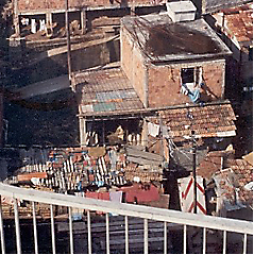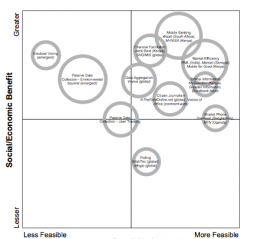base of the pyramid
Posted by CorinneRamey on Jul 16, 2008
Mobile phone use is booming. There are close to 3.5 billion mobile phones in use, and mobile penetration rates are increasing quickly, especially in developing countries. This rise of mobile phone use by low-income and so-called 'base-of-the-pyramid' users raises a number of questions. Are low-income people using mobile technology in different ways than their higher-income counterparts? How can mobile phones be desiged and used in ways that are useful to these populations? Two new studies--one of favelas in Brazil and the other of a low-income township in South Africa--seek to answer these questions.
An article in Vodafone's Receiver magazine, "Cell phone use among low-income communities – an initial study of technology appropriation in the favelas of Brazil," looks at how low-income residents of Rio de Janiero's favelas (or slums) use mobile phones. The author, Adriana de Souza e Silva, conducted a study that involved interviews with the residents of three different favelas in Rio.
Posted by CorinneRamey on May 14, 2008
Mobile phones are transforming economic life for consumers in developing countries, says a new report by David Lehr. The report Going Wireless: Dialing for Development, focuses on "base of the pyramid" consumers and the ways that mobile phones have the potential to change economies in the developing world. Lehr writes,
The mobile phone has established itself as the communication and networking platform of choice for billions of the world’s consumers, most of whom are at the base of the global economic pyramid. Worldwide, mobile phone subscribers outnumber Internet users almost 3 to 1, with much of that gap coming from skyrocketing mobile phone use in Africa, India and China.


